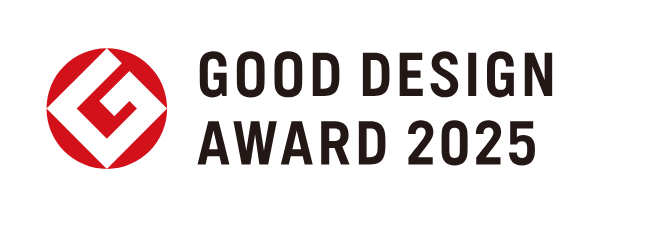BLUE OCEAN DOME Receives Good Design Award

The BLUE OCEAN DOME at the Expo 2025 Osaka-Kansai is ZERI Japan’s pavilion that SARAYA supported with the theme of leaving a bountiful ocean for future generations. Its structure is made of promising materials such as laminated bamboo, CFRP (carbon fiber reinforced plastic), and paper tubes. Inside the dome, exhibits display the water cycle and marine pollution. It is designed to be dismantled and reusable, and its structure allows for easy disassembly and transportation.
About Good Design Award
The Good Design Award has been the sole comprehensive design evaluation and commendation system in Japan since 1957. Many companies and designers from both inside and outside of Japan participate in the activity to enhance the industry and the quality of life through design. “G Mark”, the symbol of the award, has been recognized widely as a mark representing good design. |
Design Points:
- A "strong and lightweight pavilion" was created using three new materials for its structure: laminated bamboo, CFRP, and paper tubes.
- Due to early collaboration between the architecture and exhibitions, starting from the planning stage, a high integration of the exhibition content and architecture was achieved.
- The structure and joining methods were designed to be easy to disassemble and reassemble, and a recycling-oriented design was realized, with the assumption that the exhibit would be relocated after the event closed.
Yumeshima, the site of the Expo 2025, is a reclaimed island with soft ground, requiring piles to support building structures. These piles must be removed after the Expo ends, creating waste. To address this, the aim was to design a pavilion so light that pile foundations would no longer be necessary – lighter than the amount of soil excavated during foundation work.
It was also sought to ensure that the pavilion would not become waste after the Expo’s conclusion. From the very beginning, it was designed with relocation and reuse in mind.
To solve these challenges, the pavilion was envisioned as an “experimental field for exploring future possibilities.” Its structure incorporates three innovative materials – laminated bamboo, CFRP, and paper tubes. While not yet widely used, these materials are expected to play an important role in a future circular society.
From the project’s inception, the designers also wanted to create a pavilion that blends architecture and exhibition, inspiring visitors to take action under the theme of “Reviving the Ocean,” rather than focusing solely on either design or display.
Evaluation comments
The exhibition and spatial design are seamlessly interconnected, offering visitors both deep insight and emotional resonance. Designed by an architect with years of experience researching and creating temporary structures, the lightweight, low-impact architecture itself carries a powerful message. It guides visitors naturally into the exhibition, supports immersion, and allows for quiet reflection afterward.
The exhibition confronts the reality of marine pollution – particularly from ocean plastics –through visuals that are both grotesque and beautiful, stirring strong emotions in those who see them. Amid the celebratory atmosphere of the Expo, this pavilion stands out for providing a contemplative experience that invites visitors to quietly reflect on the future.
Digital tour
The Expo is over, but it’s still not too late to visit the Blue Ocean Dome. Its producer, Kenya Hara, added a page dedicated to the pavilion on his website Teikuhiko (Low altitude, high resolution tour). This project aims to showcase carefully selected places in Japan in high resolution as a new form of tourism. You can check it out here.
